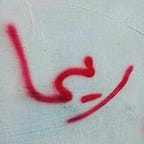Trump must begin assessing loss of Palestine refugees’ properties in Israel
Some of Trump’s billions promised to the Palestinian economy should go into hiring a specialist team of land and market experts to reach a comprehensive identification of Palestine refugees’ properties and the creation of value parameters corresponding to a realistic market value, including property that belongs to “internally displaced” Palestinians inside the Green Line.
DID YOU KNOW?
The extensive data available on Palestinian dispossession are lodged in different organizations that pre-date UNRWA. The UN Conciliation Commission for Palestine (UNCCP) possesses in its archives “extensive data on confiscated Palestinian refugee property”. Information is also available in the archives of the International Red Cross (IRC) in Geneva and Bern, and the American Friends Service Committee (AFSC) offices in Philadelphia.
The archives also include information on Palestinians who became refugees during the 1967 war and others who were expelled in 1948 but did not register with the Agency, and do not appear in UNRWA’s registry.
A report by the Institute of Palestine Studies debunks the U.S. allegations against UNRWA as contradicted by international law, UN legislation and “decades of State practice”. The claims are all “old talking points” with a new twist — that of the “deal of the century”, and shows up the policy of the Trump’s administration for what it is — a unilateral wholesale “adoption of the most extreme Israeli positions”.
Israel’s extremist position on Palestine refugees is described in the report as follows:
Palestine refugees at large, including descendants, are persons of predominantly Arab origin (holding British Mandate citizenship since 1925 and Ottoman nationality before that) who were displaced from the territory of that part of British Mandate Palestine subsequently designated as Israel, to other parts of Mandate Palestine, namely the West Bank and the Gaza Strip, as well as neighbouring countries, namely Jordan, Lebanon, and Syria, in connection with the creation of the State of Israel (i.e. the 1947–49 Arab-Israeli war). Despite being willing to return to their “homeland” in line with applicable international law, approximately 750,000 Palestine refugees were prevented from doing so by virtue of laws enacted by Israel between 1948–52, which resulted in their denationalization as well as the confiscation and disposition of their properties. After enacting a Law of Return in 1950, which encouraged the immigration of Jews from all over the world to the State of Israel, in 1952 Israel also approved the Nationality Law, which stipulated conditions that Arabs of former Palestine could not fulfil, which de facto barred them from returning to the land as nationals.
In the archives mentioned above, there is information to trace place of origin of refugees before the 1948 and correlating this geographic information with their current residence, refugee camp status, material condition of the family, and the demographic profiles of its members. With effective linkages between all the sources of information about Palestine refugees, correlations can be expanded to assess losses during the wars and property claims.
__________________
Rima Najjar is a Palestinian whose father’s side of the family comes from the forcibly depopulated village of Lifta on the western outskirts of Jerusalem. She is an activist, researcher and retired professor of English literature, Al-Quds University, occupied West Bank
